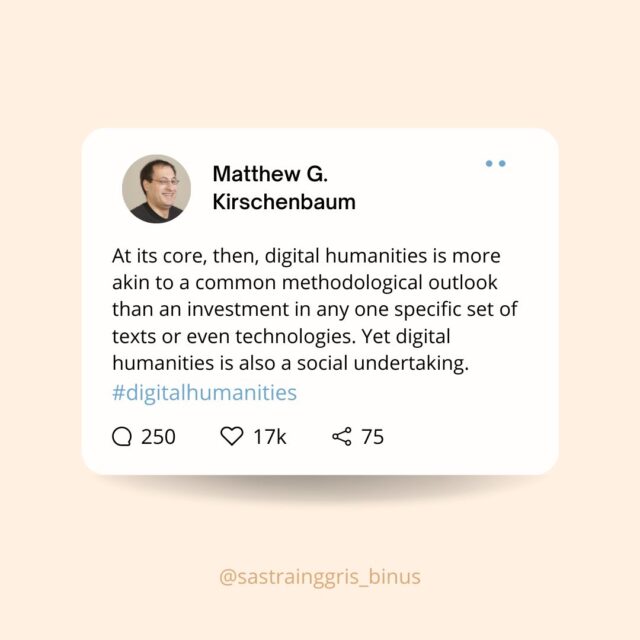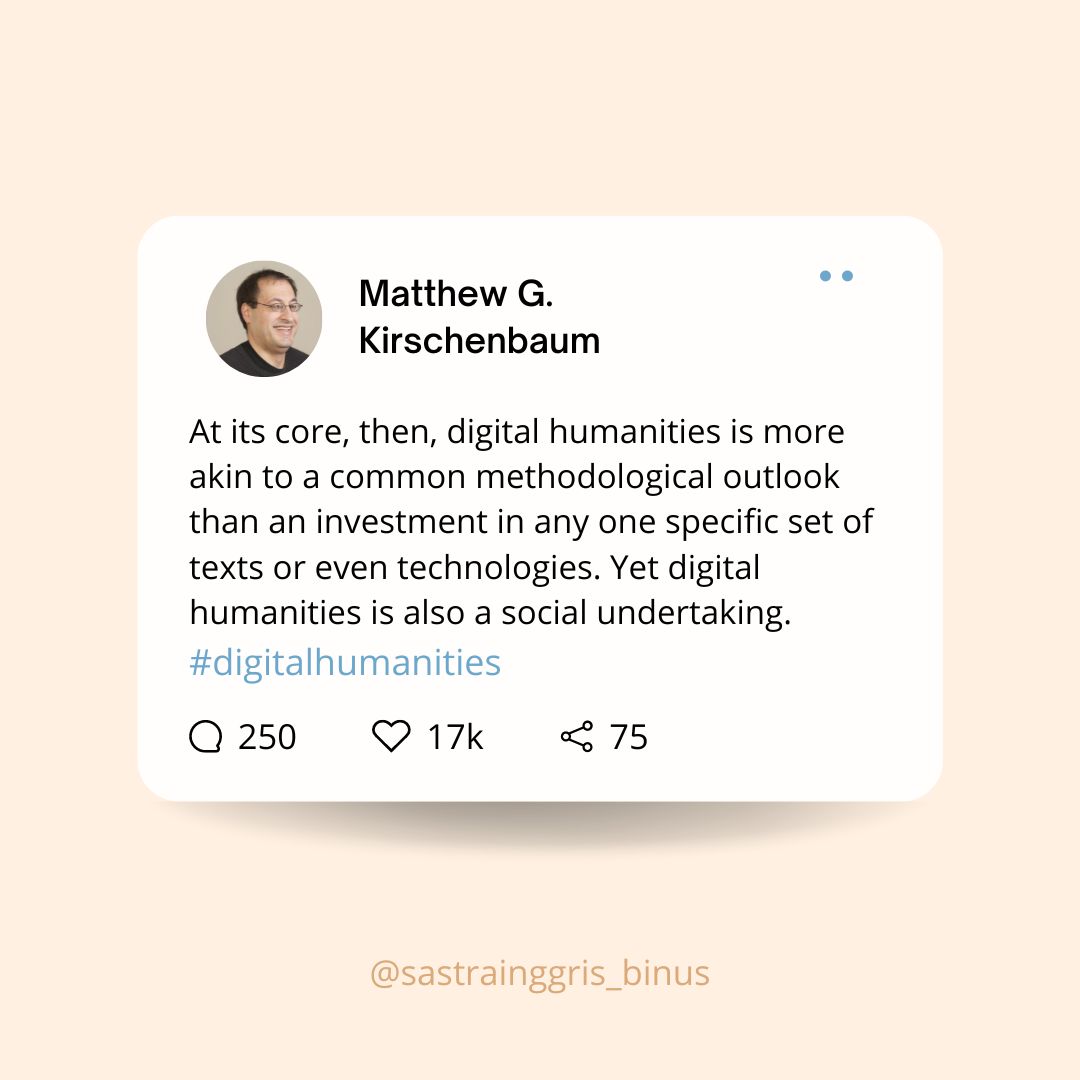Digital Humanities and Binus’ English department
What Is Digital Humanities and What’s It Doing in English Department?
by Matthew G. Kirschenbaum
Summarized by Denis Kelien (Binusian 2022)
“What Is Digital Humanities and What’s It Doing in English Department?” shows how Matthew G. Kirschenbaum explains what is Digital Humanities and the reasons why English Department have been a historically hospitable settings for the Digital Humanities.

There are a lot of research papers published by the experts just to explain the definition of Digital Humanities that even Wikipedia’s definition of Digital Humanities is a pretty decent answer, which is not surprising because the page has individuals that is associated with the digital humanities as contributors. Kirschenbaum stated that “At its core, then, Digital Humanities is more similar to a common methodological outlook than an investment in any one specific set of text or even technologies”, this outlook can be refined quantitatively by using the tools and techniques pioneered by Digital Humanities or exploring the questions qualitatively by examining sets of projects from self-identified digital humanities centers. Digital humanities is also a social undertakes which possess the networks of people that have been working together by sharing research, competing, and collaborating together for years. John Unsworth, dean of the Graduate School of Library and Information Science at the University of Illinois, was first using the term [digital humanities] in a conversation with Andrew McNeillie, the original acquiring editor for the Blackwell Companion to Digital Humanities. Both started talking and eventually opened a discussion about creating an umbrella entity for themselves. Both organizations were the aforementioned Association for Computers in the Humanities and the Association for Literary and Linguistic Computing. The result of the umbrella structure was called ADHO or the Alliance of Digital Humanities Organizations. By 2005, the Alliance for the Humanities Organizations had been established and lead them to the last key which is the launch in of the Digital Humanities Initiative by NEH in 2006. In 2008, the Digital Humanities Initiative became the Office of Digital Humanities. In the span of 5 years, digital humanities, which began as a term used among a relatively small group of researchers, is now backed on a growing number of campuses by a level of funding, infrastructure, and administrative commitments that was unthinkable even a decade ago.
Kirschenbaum suggest that there are a few reasons why the rapidly emerging digital humanities found home in the English Department. First, Computers have been a part of the English studies for so long. Shown since the early beginning of the computer era, text is a tractable data type that is easy for computers to manipulate. Text-based data processing is even available in some of the earliest computer systems and has been providing research in the English Department fields, such as stylistics, linguistics, and author attribution studies, ever since. Second, computing and composition have a very long association with each other. Third is the perfect merge between the intense conversations around the editorial theory and method in the 1980s and the widespread means to implement electronic archives and editions. Fourth, modest but much-promoted belle-lettristic project around hypertext and other form of e-literature that continue until this day which is increasingly vibrant and diverse. Fifth, the Receptiveness of the English department to cultural studies, where computers and other digital media, such as Kindle, iPad, and Nook, become the center of analysis.
For the full article: https://dhdebates.gc.cuny.edu/read/untitled-88c11800-9446-469b-a3be-3fdb36bfbd1e/section/f5640d43-b8eb-4d49-bc4b-eb31a16f3d06
